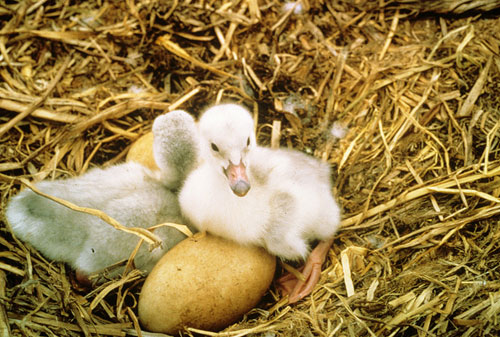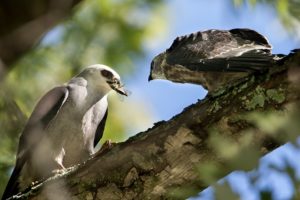
Wisconsin Breeding Bird Atlas Releases Latest Findings
Wisconsin’s volunteer-based, five-year survey to understand which birds nest here and how bird populations are changing released its second season of findings at the end of September.

Overall, the survey, known as the Wisconsin Breeding Bird Atlas II, confirmed 220 nesting species in Wisconsin, including 11 new to the state in the past two decades.
Volunteer observers also documented the growing presence of once rare native birds, including peregrine falcons, bald eagles, and trumpeter swans.
The effort – a follow-up to the first breeding bird atlas from 1995 to 2000 – wouldn’t have been possible without the help of hundreds of volunteers, says Nick Anich, Wisconsin Department of Natural Resources (WDNR) conservation biologist and lead survey coordinator.
“Our volunteer team grew to more than 1,100 people this year, and their work is providing important information on shifts in bird populations that we need to know for future conservation efforts,” he says.
Survey Highlights
For the first time ever, Mississippi kites, a raptor common in the southeastern United States that is known for its aerial acrobatics, have been found breeding in Wisconsin, with confirmation of a pair raising one chick at a nest in Rock County.
“This discovery represents one of the northernmost breeding records in the Mississippi kite’s range and perhaps the most exciting find of the atlas so far,” says Ryan Brady, Wisconsin Breeding Bird Atlas science leader and bird monitoring coordinator with the Wisconsin Bird Conservation Initiative (WCBI).
Other new species not confirmed by Wisconsin’s first breeding bird survey include the canvasback and blue grosbeak.

Meanwhile, surveyors documented increasing numbers of certain native species, including the peregrine falcon, bald eagle, trumpeter swan, orchard oriole, and tufted titmouse, compared with 20 years ago.
View a WDNR infographic of the major results and read more about the findings on the Wisconsin Breeding Bird Atlas’ eBird website.
More Volunteers Needed
With more than 54,000 birding checklists submitted by volunteers to date, the survey has documented the whereabouts and behavior of more than 3 million birds and 239 species across Wisconsin, with breeding confirmed in 220 of those species.
A lot of work still remains, though. “We’ve got great volunteer coverage in more populated areas,” Anich says, “but there are large swaths especially in the Driftless Area and across northern and central Wisconsin where we could really use help over the next couple of years.”
“It’s easy to participate,” he adds, “and you don’t have to be an expert birder to help the project.”
Volunteers observe birds and enter their sightings online into the eBird database developed for the survey project by the Cornell Lab of Ornithology. The records are then reviewed by Anich, Brady, and other ornithologists from organizations leading the project, including the Wisconsin Society for Ornithology, Western Great Lakes Bird and Bat Observatory, and WCBI.
Getting Involved
The survey will continue through 2019, with a push in the next few years to fill coverage gaps by sending current volunteers into under-surveyed areas and recruiting new volunteers who live in those areas.
Although breeding activity is winding down for many species for the year, Anich says now is a good time to get ready to join the effort next spring. People can began learning how to contribute observations at the project website: wsobirds.org/atlas. Regular training sessions take place throughout the state, and a list of events can also be found on the site.
Anich encourages birders of all skill levels to get involved. “We get feedback constantly from people about how rewarding it is to get outside in nature and pay attention to things you may not usually notice,” he says. “It’s also kind of fun to see your sightings up on the map.”
Adapted from a Wisconsin Department of Natural Resources press release.
